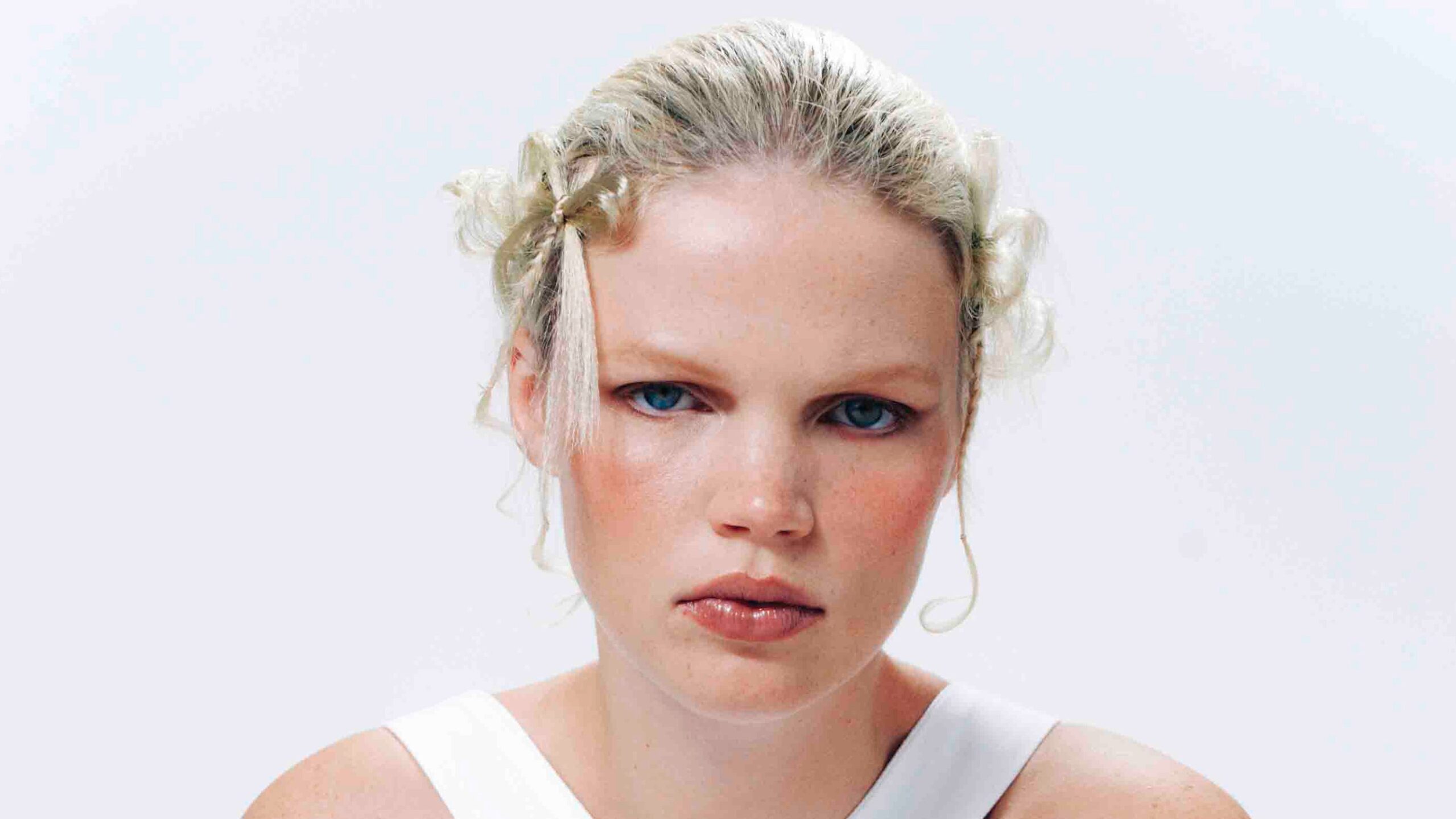
Finding alternative methods for presenting, re-engineering, and breaking through the narrowness of fashion design drives Sinead O’Dwyer. Her lookbook, named Assembly, for spring 2024 is a joyful affirmation of her embrace of body-positivity, inclusive of UK sizes 6-30. This season, she published it off-runway, in concert with an in-conversation she convened with Mohoro Seward at London’s Royal College of Art—in the Masters fashion studio where her dissent from the strictures of conventional pattern-cutting first took form as a student.
O’Dwyer ranks amongst the radical sisterhood that includes Ester Manas, Karoline Vitto, Di Petsa, and Chopova Lowena. Each puts their own distinctive stamp on a style proposition. This season, O’Dwyer took the space and time to explain the psychological and technical backstory behind her signatures: the subversively sexual hybrid of school uniform, ingenious tailoring, and lattice-work body-pieces which walked, as she talked.
“This is a part of my personal journey,” she said. “It’s sort of where I discovered the root of a lot of, I suppose, mental health things I was going through in relation to body dysmorphia and eating disorders—and (I) kind of started connecting the dots in class, with clothing experiences I’d had.” The particular revelation O’Dwyer pinpointed is the fact that garment design begins on standardized dummies, and is graded up to larger sizes from there—where the fit starts to go haywire. Fashion students only get to practice on school issue dress-forms (as alternatives are expensive to buy), she said. The industrialized result: the distress and despair caused to women and girls who are confronted in changing rooms by clothes that don’t fit—and by the conclusion that it must be our bodies that are at fault. “That’s something that I never understood growing up.”
Who does? O’Dwyer plotted her own course by developing life-cast molds on friends, and working out technical features to support busts—say, with tie halter necks—and hold curves in cutaway bodysuits and leotard shirts. Her results are celebratory, abounding with the youthful eroticism O’Dwyer brings to fashion.
“Obviously, representation is such an important part of changing the industry,” she remarked to Seward. The point she got across is the level of expertise and novel thinking that has to be applied to make that a reality. “Because the research and development phase, for multiple bodies, is what really creates lasting change.
